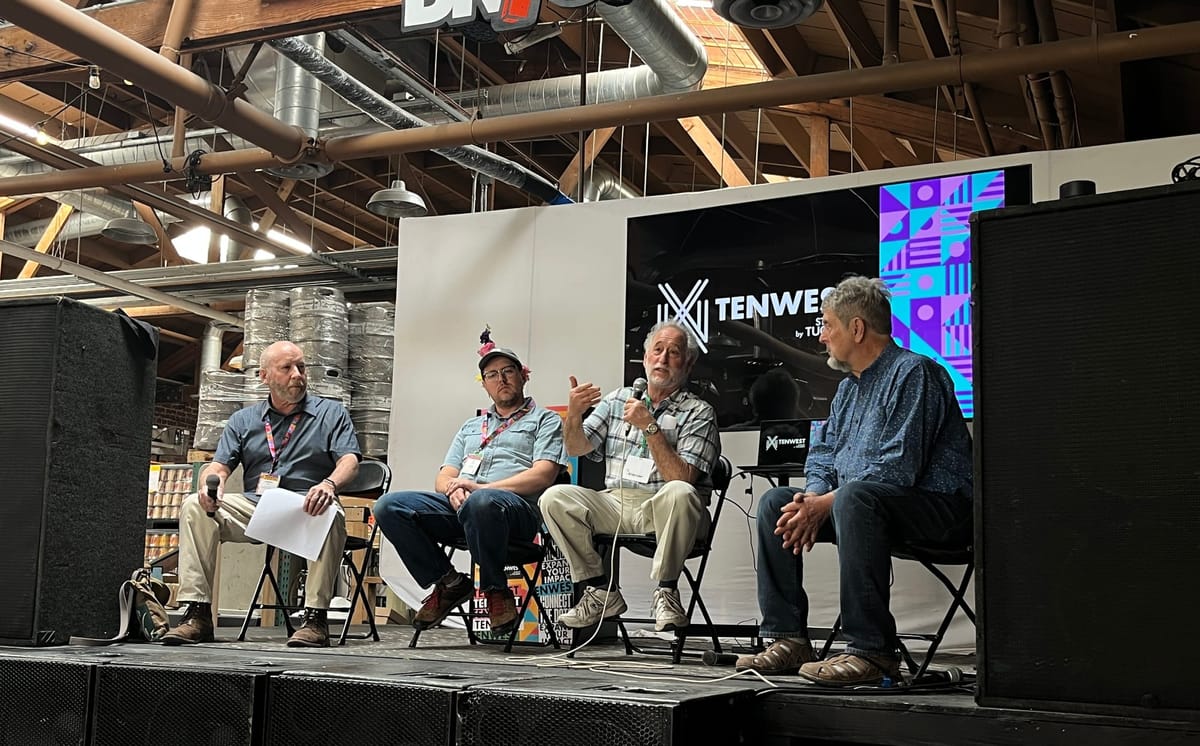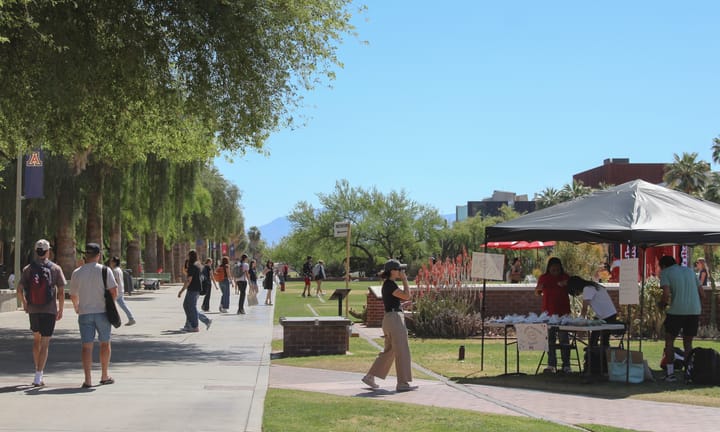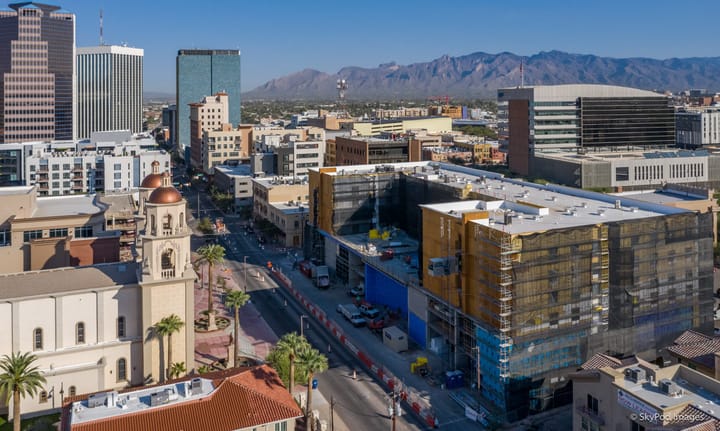Experts urge climate-resilient crops to secure Tucson’s food future
Experts at the TenWest conference emphasized the need for climate-resilient crops, water conservation, and local food production to help Tucson adapt to a hotter, wetter future.

A trio of local experts discussed ways in which Tucson can adapt its food systems to a hotter, wetter future, highlighting the urgency of rethinking how food is grown and consumed in the face of climate change.
The panel, “Future-Proof Food Resilience: Scaling Sonoran Desert Agriculture in a Hotter, Drier World,” was part of last week’s TENWEST annual professional development event. TENWEST is a hybrid of a summit and community festival focused on technology, entrepreneurship and creativity.
Jonathan Mabry, an archaeologist and president of Tucson City of Gastronomy, told attendees that Tucson is facing a challenging food future and that if greenhouse gas emissions continue, summers will be 8 degrees hotter and 18% wetter, with winters averaging 7 degrees warmer and 13% wetter by 2080.
Mabry, who has been documenting Tucson’s 4,000-year habitation, Indigenous subsistence adaptations, and the tradition of agriculture and village life, served as moderator of the panel, which included author Gary Nabhan; Erik Stanford, owner and operations manager of Pivot Produce; and Janos Wilder, a James Beard Award-winning chef.
“This is a paradox,” said Nabhan, author of "Growing Food in a Hotter, Drier Land."
Nabhan’s book explores new models and techniques to grow crops, such as harvesting water from rooftops, roads or parking lots.
“We need to use desert-adapted crops … but we need to use them in different contexts from what we had in the past,” Nabhan said.
He talked about methods like growing plants under mesquite trees to reduce the amount of heat on the crops and taking steps to protect farmers from the health risks posed by the environment.
“We need more shade houses and structures adjacent to buildings, rather than having the embedded energy and water that typical greenhouses use,” Nabhan said.
Mabry said that from 2007 to 2017, Pima County exported 1.7 billion kilograms of food and imported 2.2 billion kilograms.
“That’s 550,000 tons more food we’re importing than exporting from Pima County,” Mabry said.
The Tucson City of Gastronomy believe Tucson has the potential to be a global model for climate-resilient food systems through desert-adapted heritage crops and wild foods.
Panelists agreed Pima County needs to start thinking about growing its own food in controlled environments, stressing the importance of elevating local food and produce.
“These 5,000-year-old products, similar products that exist in dry climates all around the world, are not the food of the past—they’re the food of the future,” Wilder said.
Wilder has spent his career not only cooking but creating food from native plants and crops.
“I wanted to tell the story in my food about where we live,” Wilder said. “I try to elevate these really humble products to the level of world-class cuisine because that’s what they are.”
Stanford said he created his food distribution service, Pivot Produce, to offer restaurants, chefs, residents and schools greater access to local produce.
“The people who we serve deserve to have access to local produce, so we’ve really shifted the way we think about not just where food comes from,” Stanford said.
Since Stanford founded it in 2015, he’s been able to educate the community about the region’s food heritage and provide 450 produce bags a week to residents.
“It’s part of my personal life goal to show that farming can be both profitable and sustainable, and I look to those folks for all of the inspiration that I need to keep me going,” Stanford said.
Nabhan said that focusing on water conservation and low-energy food production in urban and rural areas can give communities a greater chance of reducing and reversing climate change than switching to electric cars.
It’s just a matter of follow-through.
“We’re investing in the wrong things in this community, and until we realize that we’re already there with Mad Max and Thunderball and the post-apocalyptic era, we have to pick up the pieces and reassemble them,” Nabhan said.
Arilynn Hyatt is a journalism major at the University of Arizona and Tucson Spotlight intern. Contact her at arilynndhyatt@arizona.edu.
Tucson Spotlight is a community-based newsroom that provides paid opportunities for students and rising journalists in Southern Arizona. Please support our work with a paid subscription.




